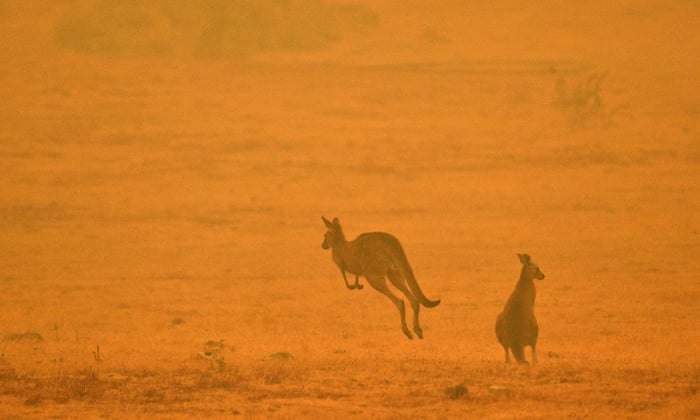Peking University, March 24, 2022: Wildfires will pose a greater socioeconomic risk in years to come, scientists have predicted, as they increasingly burn agricultural areas and harm populations.
Snowy Valley on the outskirts of Cooma in Australia during a wildfire. Photograph: Saeed Khan/AFP/Getty Images
A study uses machine learning to model where wildfires are likely to strike in coming years, and their impact on humanity.
The researchers, from universities including Peking University, Beijing and Oak Ridge National Laboratory in the US, hope their study can be used to show regional disparities in wildfire exposure to help prepare for fires in those areas.
They used 13 Earth system models which simulate the atmosphere, the ocean, sea, ice, the land surface and the vegetation on land and the biogeochemistry of the ocean, and also show the movement of carbon through the Earth system.
While the models showed a smaller increase of carbon released by wildfires, the socioeconomic factors had a greater increase.
This, the researchers said, is because: “Such elevated socioeconomic risks are primarily caused by the compound regional enhancement of future wildfire activity and socioeconomic development in the western and central African countries, necessitating an emergent strategic preparedness to wildfires in these countries.”
As countries in western and central Africa develop, wildfires are more likely to hit residential and agricultural areas.
During the 2019–2020 Australian bushfire season, a series of major wildfires burned large areas, costing more than US$20bn, and killing at least 33 people. These types of impacts are likely to become more common.
The researchers found many areas which are likely to face a “more flammable future”, including the Congo, which under their modelling faces a higher leaf area index – meaning there will be more fuel to burn – and populated areas in the US which could face catastrophic impacts like those seen in Australia.
“For the populated western and north-eastern coasts and the Appalachian Mountains of the US, as well as northern and eastern Australia, our observational constraint confirms the previously projected more flammable future from fuel drying under climate change, suggesting an increased likelihood of the 2019–2020 Australian bushfire and 2020 extreme western US wildfire seasons in the upcoming decades,” the researchers said.
